Key Takeaways
1. Goldman's Success Rooted in Shared Principles and Values
Our clients’ interests always come first. Our experience shows that if we serve our clients well, our own success will follow.
Codified values. In 1979, Goldman Sachs formalized its values into a set of business principles, a revolutionary move for Wall Street at the time. These principles, emphasizing client interests, teamwork, and integrity, became the cornerstone of the firm's culture. They guided decision-making and fostered a sense of shared purpose among employees.
Recruiting and socialization. Goldman meticulously recruited individuals who not only possessed exceptional skills but also aligned with the firm's values. New hires underwent rigorous training and socialization processes to instill the Goldman ethic. This emphasis on shared values helped create a cohesive and collaborative work environment.
Long-term perspective. The firm's commitment to "long-term greedy," prioritizing long-term success over short-term gains, further reinforced its values. This approach fostered trust with clients and contributed to Goldman's reputation for ethical behavior, setting it apart from its competitors.
2. Partnership Structure Fostered Culture of Trust and Dissonance
We are partners—emotionally, psychologically, and financially. There can be no borders between us, no secrets.
Financial interdependence. Goldman's partnership structure, where partners owned the firm's equity and shared in its profits and losses, created a strong sense of financial interdependence. This fostered a culture of mutual trust and accountability, as partners' personal wealth was directly tied to the firm's success.
Opportunities for dissent. The partnership structure also encouraged productive dissonance, allowing for open disagreement and debate among partners. This fostered critical thinking and helped the firm make better decisions, as diverse perspectives were considered.
Flat organization. The firm's relatively flat organizational structure, with analysts and associates working closely with partners, further facilitated communication and collaboration. This fostered a sense of teamwork and shared responsibility, contributing to Goldman's success.
3. Growth Pressures Led to Organizational Drift
Our goal is to provide superior returns to our shareholders.
Regulatory changes. The repeal of the Glass-Steagall Act in 1999 and other regulatory changes intensified competition in the financial services industry. This put pressure on Goldman to grow and adapt to the changing landscape.
Competitive forces. Increased competition from larger, publicly traded firms and the rise of hedge funds and private equity firms further fueled the pressure for growth. Goldman felt compelled to expand its business and increase its market share to remain competitive.
Internal ambitions. The desire to provide superior returns to shareholders, a principle added to Goldman's list upon going public, created an intrinsic conflict with the firm's commitment to putting clients' interests first. This pressure for growth, combined with other factors, led to organizational drift.
4. IPO Accelerated Cultural Shifts and Increased Conflicts
As we begin the new century, we know that our success will depend on how well we change and manage the firm’s rapid growth.
Shift in ownership. The IPO in 1999 marked a significant turning point for Goldman, as it transitioned from a private partnership to a publicly traded company. This change in ownership structure altered the firm's financial interdependence and accountability.
Increased scrutiny. As a public company, Goldman faced increased scrutiny from shareholders, analysts, and the media. This put pressure on the firm to meet short-term earnings targets, potentially at the expense of long-term client relationships.
Compensation changes. The IPO also led to changes in compensation policies, with a greater emphasis on individual performance and short-term profits. This incentivized employees to prioritize their own interests over those of the firm and its clients.
5. Evolving Business Mix Prioritized Trading Over Client Interests
Integrity and honesty are at the heart of our business.
Trading dominance. Over time, Goldman's business mix shifted, with trading and principal investing becoming increasingly dominant sources of revenue. This shift altered the firm's culture and priorities.
Client relationships. The rise of trading led to a more transactional approach to client relationships, as the firm focused on generating fees from buying and selling securities rather than providing long-term advisory services.
Conflicts of interest. The increasing emphasis on trading also created more potential for conflicts of interest, as Goldman's own trading activities could potentially be at odds with the interests of its clients.
6. Legal Standard Replaced Ethical Standard in Client Relationships
Goldman’s Mortgage Compliance Training Manual from 2007 notes that putting clients first is ‘not always straightforward.’
Shift in interpretation. The meaning of Goldman's first business principle, "Our clients' interests always come first," gradually shifted from implying a higher ethical responsibility to implying only the legally required responsibility.
"Big boy" rationalization. This shift was often rationalized by the notion that Goldman's clients were "big boys," sophisticated enough to understand potential risks and conflicts and look out for themselves.
Legal compliance. The firm increasingly relied on legal compliance as the standard for ethical behavior, focusing on meeting legal requirements rather than upholding a higher moral duty to clients.
7. Residual Dissonance Enabled Relative Outperformance During Crisis
We thought that if our clients did well, we would do well.
Expertise at the top. Despite the cultural shifts, Goldman's top executives possessed deep expertise in trading and risk management. This enabled them to better understand and manage the risks associated with the financial crisis.
Dissonance and debate. The firm's residual culture of dissonance, where open disagreement and debate were encouraged, helped to break through structural secrecy and identify potential problems.
Risk management systems. Goldman's sophisticated risk management systems, combined with the expertise of its leaders, allowed the firm to navigate the financial crisis more successfully than its competitors.
8. Public Service Rationalized Ethical Lapses
Integrity and honesty are at the heart of our business.
Sense of higher purpose. Goldman's commitment to public service, including its philanthropic activities and the movement of its alumni into government positions, gave employees a sense of higher purpose.
Rationalization of behavior. This sense of higher purpose was sometimes used to rationalize behavior that was inconsistent with the firm's principles, as employees believed that their actions were ultimately for the greater good.
Government connections. The firm's close ties to government, while beneficial in some ways, also raised concerns about potential conflicts of interest and undue influence.
9. Blindness to Change Poses Future Risks
The impressive statistics of Goldman’s many continuing successes, and of clients’ willingness to condone possible conflicts because of its quality of execution, doesn’t mean that the change in the firm’s culture doesn’t pose dangers both for Goldman and for the public in the future.
Normalization of deviance. The incremental nature of the changes at Goldman, combined with the firm's success, made it difficult for employees to recognize the extent of the organizational drift.
Structural secrecy. The increasing complexity of the firm's business and the growing number of employees contributed to structural secrecy, making it harder for information to flow freely and for potential problems to be identified.
Potential for failure. The combination of organizational drift, increasing size and complexity, and greater interrelatedness increases the risk of conflicts and organizational failure, posing dangers both for Goldman and for the public in the future.
10. Lessons for Leaders: Managing Organizational Drift
Figuring out what happened at Goldman is a fascinating puzzle that takes us into the heart of a dynamic complex organization in a dynamic complex environment.
Prioritize values. Leaders must actively promote and reinforce the organization's core values, ensuring that they are not merely words on paper but are lived and breathed by employees at all levels.
Encourage dissent. Creating a culture of open communication and dissent, where employees feel comfortable challenging the status quo, is crucial for identifying and addressing potential problems.
Promote transparency. Leaders should strive to reduce structural secrecy by fostering transparency and ensuring that information flows freely throughout the organization.
Last updated:
FAQ
What's What Happened to Goldman Sachs about?
- Insider View: The book offers an insider's perspective on Goldman Sachs, focusing on the author's twelve-year tenure and the firm's evolution.
- Organizational Drift: It explores the concept of "organizational drift," where Goldman’s culture and values shifted due to external pressures.
- Consequences of Change: The narrative examines how these changes impacted Goldman’s reputation, client relationships, and ethical standards, especially during the financial crisis.
Why should I read What Happened to Goldman Sachs?
- Financial Insights: The book provides valuable insights into the operations of a leading investment bank, essential for those interested in finance and corporate governance.
- Cultural Analysis: It offers a detailed analysis of organizational culture shifts and their risks, relevant for leaders across industries.
- Lessons on Ethics: Readers can learn about the importance of maintaining ethical standards and the dangers of prioritizing short-term gains.
What are the key takeaways of What Happened to Goldman Sachs?
- Cultural Shift: Goldman Sachs' culture shifted from client-focused to a more legalistic approach, prioritizing legal standards over ethical ones.
- Impact of Going Public: The transition to a public company introduced pressures that altered decision-making and led to ethical dilemmas.
- Organizational Drift: Small, incremental changes led to significant cultural shifts, often unnoticed until they caused major issues.
What are the best quotes from What Happened to Goldman Sachs and what do they mean?
- Client Interests: “Our clients’ interests always come first.” This principle was central to Goldman’s culture but shifted to align more with legal obligations.
- Unforeseen Change: “The pursuit of organizational goals...produces a succession of small, everyday decisions that add up to unforeseen change.” This highlights the concept of organizational drift.
- Fair Competition: “We must always be fair competitors and must never denigrate other firms.” This reflects Goldman’s commitment to integrity, challenged by market realities.
What is the concept of "organizational drift" in What Happened to Goldman Sachs?
- Definition: Organizational drift is the gradual shift in an organization’s culture away from its original principles.
- Incremental Changes: Small, everyday decisions accumulate over time, leading to significant deviations from foundational values.
- Consequences: Drift can result in ethical lapses and conflicts of interest, jeopardizing the firm’s reputation and success.
How did the transition to a public company affect Goldman Sachs' culture?
- Growth Pressure: The transition introduced pressures to grow rapidly and meet shareholder expectations, altering decision-making.
- Value Change: A new focus on shareholder returns shifted priorities, leading to a more transactional client approach.
- Liability Loss: Loss of personal liability for partners led to increased risk-taking and a focus on profit maximization.
How did Goldman Sachs manage conflicts of interest according to What Happened to Goldman Sachs?
- Conflict Clearance: A formal process was in place to manage conflicts, ensuring compliance with legal standards.
- Chinese Walls: These were used to separate divisions and prevent information sharing, though their effectiveness was questioned.
- Rationalization: Over time, conflicts were rationalized as legally compliant, often overlooking ethical considerations.
How did Goldman Sachs perform during the 2008 financial crisis?
- Outperformance: Goldman outperformed many competitors, achieving a positive return on equity during the crisis.
- Government Support: Government intervention was crucial in stabilizing Goldman, raising questions about its sustainability.
- Crisis Management: The firm’s risk management and adaptability were key to its survival, though ethical scrutiny followed.
What role did leadership play in the changes at Goldman Sachs?
- Leadership Dynamics: Changes in leadership, particularly the shift to a single CEO, impacted the firm’s culture and decision-making.
- CEO Influence: Leaders like Jon Corzine and Lloyd Blankfein had differing approaches, influencing the firm’s strategic direction.
- Accountability Loss: The loss of personal accountability post-IPO contributed to a culture prioritizing financial performance over ethics.
How does the book describe Goldman Sachs' culture?
- Partnership Mentality: Historically, the culture emphasized a partnership model fostering trust and accountability.
- Value Shift: Over time, the culture shifted towards profit maximization, leading to conflicts of interest.
- Residual Elements: Some original cultural elements, like teamwork, remain but are overshadowed by profit-driven motives.
What are the implications of Goldman Sachs' actions for the financial industry?
- Ethical Standards: Goldman’s practices reflect broader industry issues where profit often outweighs ethics.
- Regulatory Challenges: The need for stronger regulations to ensure ethical standards and client interests is highlighted.
- Cultural Reflection: Goldman’s experience serves as a cautionary tale, emphasizing adherence to core values amidst pressures.
How does the author suggest preventing organizational drift?
- Strong Governance: Robust governance structures prioritizing ethical behavior and accountability are essential.
- Cultural Reinforcement: Reinforcing a culture of trust and collaboration ensures alignment with organizational principles.
- Continuous Evaluation: Regular evaluation of practices and principles helps identify and address deviations proactively.
Review Summary
What Happened to Goldman Sachs offers an insider's perspective on the firm's cultural shift from prioritizing client interests to maximizing shareholder value. Readers appreciate Mandis's analysis of organizational drift, exploring how incremental changes led to a transformation in Goldman's values and practices. The book provides historical context and examines multiple factors contributing to this evolution, including going public, rapid growth, and changing market dynamics. While some find the content insightful, others note a potential pro-Goldman bias. Overall, reviewers value the book's exploration of corporate culture and ethical considerations in the financial industry.
Similar Books


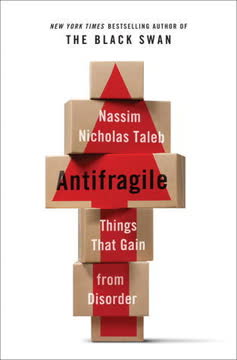
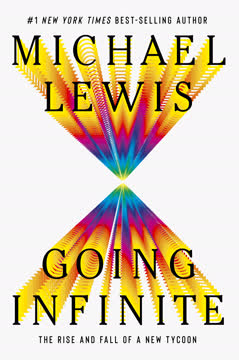


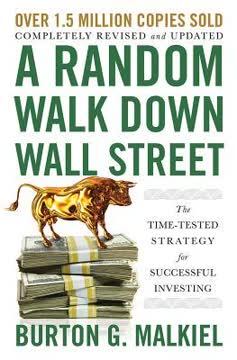
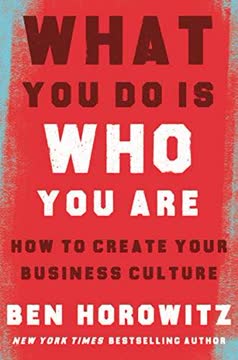

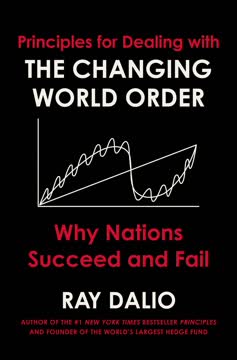
Download PDF
Download EPUB
.epub digital book format is ideal for reading ebooks on phones, tablets, and e-readers.





